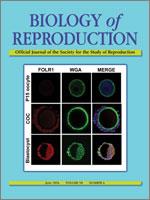Endothelial nitric oxide (NO) production is partly responsible for maintenance of uterine vasodilatation during physiologic states of high circulating estrogen levels, e.g., pregnancy. Although 3%–5% of estrogen receptors (ER-alpha/beta) localize to the endothelial plasmalemma, these receptors are responsible for the nongenomic vasodilator responses. Estradiol induces endothelial NO synthase (eNOS) activation to increase NO production; however, it is unknown if eNOS regulation is dependent on both ERs. We hypothesize that ER-alpha and/or ER-beta are capable of changing eNOS phosphorylation and increasing NO production in uterine artery endothelial cells (UAECs). UAECs were 1) treated with vehicle or increasing concentrations (0.1–100 nM) or timed treatments (0–30 min) of estradiol and 2) pretreated with the inhibitors ICI 182,780 (nonspecific ER), 1,3-Bis(4-hydroxyphenyl)-4-methyl-5-[4-(2-piperidinylethoxy)phenol]-1H-pyrazole dihydrochloride (MPP; ER-alpha specific), or 4-[2-phenyl-5,7-bis(trifluoromethyl)pyrazolo[1,5-a]pyrimidin-3-yl]phenol (PHTPP; ER-beta specific) followed by estradiol to analyze the changes in eNOS stimulatory Ser1177eNOS and Ser635eNOS versus inhibitory Thr495eNOS via Western blot analysis. UAECs were also pretreated with MPP, PHTPP, or MPP PHTTP followed by estradiol or treated with the agonists estradiol, 4,4′,4″-(4-propyl-[1H]-pyrazole-1,3,5-triyl)trisphenol, 2,3-bis(4-hydroxyphenyl)-propionitrile, or ATP to quantify total NOx levels (NO2 NO3). Estrogen and ER-alpha activation induced an increase in Ser1177eNOS and Ser635eNOS, a decrease in Thr495eNOS, and an increase in NOx levels. In contrast, ER-beta activation only reduced Thr495eNOS without changes in Ser1177eNOS or Ser635eNOS. However, ER-beta activation increased NOx levels. Lastly, the antagonism of both receptors induced a reduction in basal and stimulated NOx levels in UAECs. These data demonstrate that 1) eNOS phosphorylation changes occur via ER-alpha- and ER-beta-dependent mechanisms and 2) ER-alpha and ER-beta can both increase NO levels independently from each other.
How to translate text using browser tools
11 May 2016
Identification of Differential ER-Alpha Versus ER-Beta Mediated Activation of eNOS in Ovine Uterine Artery Endothelial Cells
Mayra B. Pastore,
Saira Talwar,
Meghan R. Conley,
Ronald R. Magness
ACCESS THE FULL ARTICLE

Biology of Reproduction
Vol. 94 • No. 6
June 2016
Vol. 94 • No. 6
June 2016




